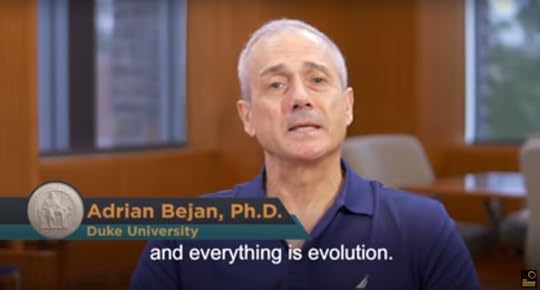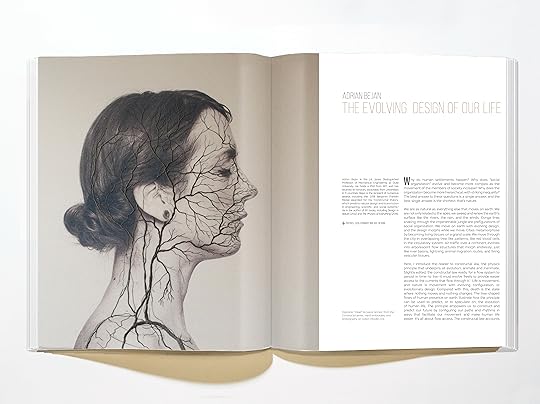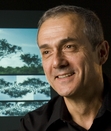Adrian Bejan's Blog, page 10
February 22, 2021
How all design is derivative of the physics of the universe
How all design is derivative of the physics of the universe
https://www.facebook.com/aurodesignschool/videos/420424909018112/
January 29, 2021
The Physics Behind Freedom by Dr. Adrian Bejan | AIER Authors Corner
December 12, 2020
The Development of Research in Socioeconomic Inequalities and Social Stratification: A Bibliometric Analysis
Today, one can observe the socioeconomic inequalities in all kinds throughout the world. Many international organizations are dealing with this topic from a broad perspective, analyzing almost every issue within the specific frame of socioeconomic inequalities. Some assume that socioeconomic inequalities and social stratification receive insufficient attention; others think that socioeconomic inequalities, which affect social and economic structures from a multidimensional perspective, both among and within countries, have not been adequately studied. Therefore, we conducted a detailed bibliometric analysis of publications on socioeconomic inequalities and social stratification in the Scopus database. This paper deals first with the numbers and percentages of such publications over time, and then as with their distribution according to the academic discipline. Their changes in number and percentages social stratification the relevant disciplines are also analyzed, along with the universities, research institutions and funding relationships. Finally, the number of citations and citation relationships within the field are discussed. Thus, the research frame of socioeconomic inequalities is analyzed within the framework of a bibliometric analysis, after which the results are discussed with quantitative data. As a result of these analyses, we conclude that there has been an increasing interest in socioeconomic inequalities since the 1970s, an interest that, for the last ten years, has been directed toward the systematic and theoretical analysis of this extremely complex issue.
December 6, 2020
Coronavirus Invasion and Neanderthal Retreat
An avalanche of articles is asking why Africa was relatively untouched by the coronavirus. NBC News put it bluntly: Covid models predicted devastation in Africa, but the reality is starkly different [1].
Last March, at the start of the pandemic, I predicted the African exception. Here I share with you what I wrote then, and I conclude with the science that has just occurred, which supports my prediction:
1. The nonuniform distribution of susceptibility to the coronavirus corresponds to the nonuniform distribution of Neanderthal DNA.
2. The human susceptibility was inherited from the Neanderthals, which is why those with zero Neanderthal DNA (in Africa) are less susceptible.
3. The Neanderthals declined to extinction because of virus induced diseases, not because of Darwinian competition with allegedly superior humans.
Any new ‘connection’ is an opportunity for new scientific research. This means to take a fresh look at the available body of data on virus spreading. It means to ask new questions about known facts.
This new understanding would make it easier to anticipate the spreading of diseases, and to offer help to those who are threatened the most.
June 19, 2019
The Constructal law explained – video from the Franklin Institute
 This very explanatory video on the Contructal law was made by the Franklin Institute for the medals ceremony, when Adrian Bejan received the 2018 Benjamin Franklin Medal in Mechanical Engineering.
This very explanatory video on the Contructal law was made by the Franklin Institute for the medals ceremony, when Adrian Bejan received the 2018 Benjamin Franklin Medal in Mechanical Engineering.https://www.youtube.com/watch?v=tgEBTPee9ZM
June 11, 2019
“The Evolving Design of Our Life” Adrian Bejan’s article in LA+DESIGN magazine
As an interdisciplinary journal of landscape architecture, LA+ DESIGN magazine delves into the role of design in times of transformative technological and environmental change where nothing on Earth, or even in space, seems beyond the reach of designers.
In the last issue (09, Spring 2019) of LA+DESIGN engineer and physicist Adrian Bejan outlines his constructal law, which predicts natural design and its evolution in engineering, scientific, and social systems in his article “The Evolving Design of Our Life“.
April 15, 2019
Keep it Juicy! Physics Says Time DOES Fly
[image error] Time seems to fly as we age. The Keep It Juicy! blog author, Helen Mitternight, talks to physicist Adrian Bejan about the physics of how that happens and how to slow time.
Listen online, the 17th of April 2019.
February 23, 2019
Science and The Origin of Living Things
[image error]
“Adrian Bejan, J.A. Jones Professor of Mechanical Engineering at Duke University, delivers a thought-provoking analysis of the mechanics of life, energy, and the science of our natural world.” – futuretechpodcast.com
Listen to this podcast on futuretechpodcast.com!
February 3, 2019
Physics, Biology and Economic Inequality
[image error]
Alan Krassowski @ https://medium.com/@dappsec/what-is-decentralization-3467e40ce899
“What nature try to do on its own, we tend to do in our life movement, because we too are part of the flowing nature.”
A piece by Peder Zane on the Wall Street Journal
Alternatively source WSJ Weekend Interview 2 FEB 2019
January 13, 2019
Physics explains why time passes faster as you age
[image error] Ephrat Livni exposes Prof. Bejan’s Constructal view on the passage of time, on the basis of a peer-reviewed publication to be soon published in the European Review journal, in this recent online article.
Source
Ephrat Livni, Physics explains why time passes faster as you age , What you see is what you get, QUARTZ, 8 Jan. 2019, qz.com





